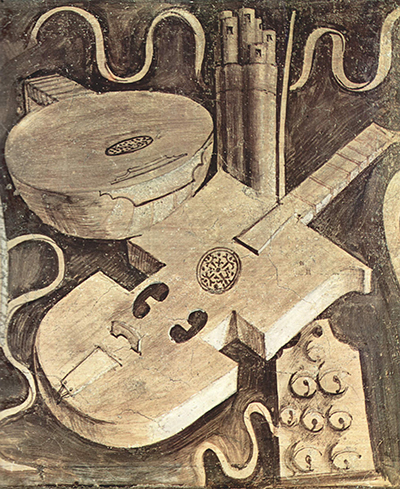When it comes to artists of the Renaissance, Giorgione's name may not be as widely-recognised as those of Leonardo, Botticelli or Michelangelo, but lovers of art have long admired his work.
Indeed, it is perhaps the greatest testament to his skill and talent as an artist that his name is still remembered, centuries after his death, even though only six of his paintings are known to have survived. Those works that remain are striking and unforgettable: they mix a distinctly medieval approach to perspective and composition with a more naturalistic interpretation of the main subjects, leading to a vividly dreamlike combination of the realistic and the otherworldly.
Because so few of Giorgione's paintings survive, an unusually large amount of attention has been paid to his drawings and sketches. These are often distinctively forward-looking works, looking as though they could easily have been drawn in subsequent eras; many observers would be surprised to find that they actually date from the early sixteenth century. Musical Instruments, one of Giorgione's ventures into the medium of fresco, is a good example of this. It depicts a still life of instruments arranged in a curiously warped perspective, rendered in a stark monochrome, with the general feeling of an image - perhaps a poster - produced during the Expressionist movement of the twentieth century.
In Musical Instruments, we can see behind the structure and depth associated with High Renaissance painting, and witness what lies beneath these layers of light and colour. The instruments (themselves rather strange-looking to modern eyes, being instruments from the sixteenth century) are arranged in a composition seemingly designed to fill every corner of the image; what appears to be a curled ribbon stretches behind them, apparently to ensure that no space is left empty. The effect, once again, is remarkably like a modern poster, and it should come as no surprise that Musical Instruments has been used as an illustration for book covers: it is easy to imagine written text accompanying the image.
What Giorgione has captured in his fresco is less the reality or even the ideal of musical instruments, but rather music as an abstract concept: the instruments, while ostensibly still, appear juddering with life while the ribbon dances to whatever tune they are playing. Because of its timeless qualities, Musical Instruments by Giorgione will make a perfect choice for an art print. You can place it on your wall to bring a touch of music and vitality, as well as aesthetic beauty, to your household. Family and visitors alike will come to love this new addition to the home, one that brings a touch of Renaissance life right into your living room.




